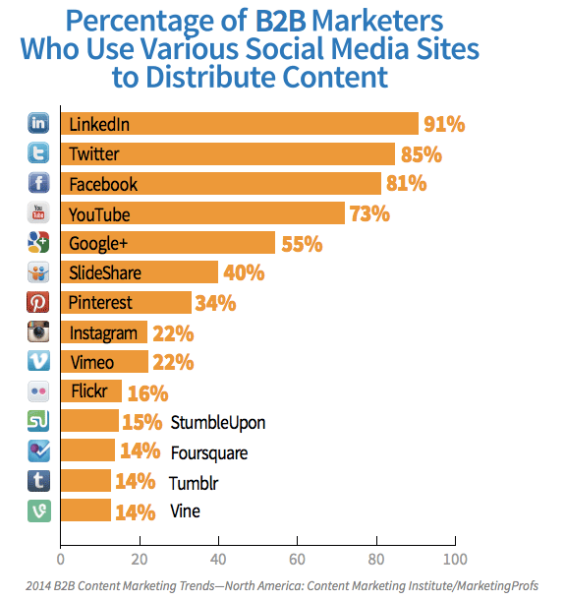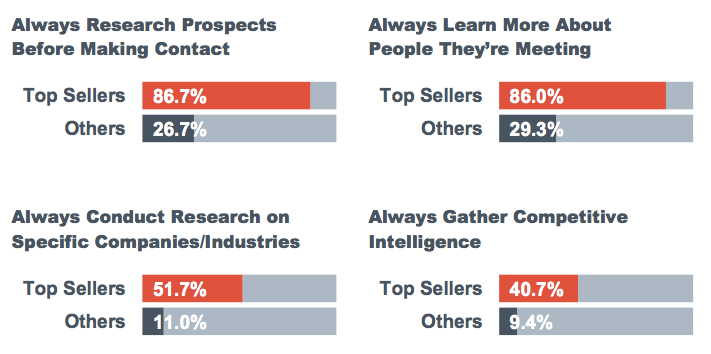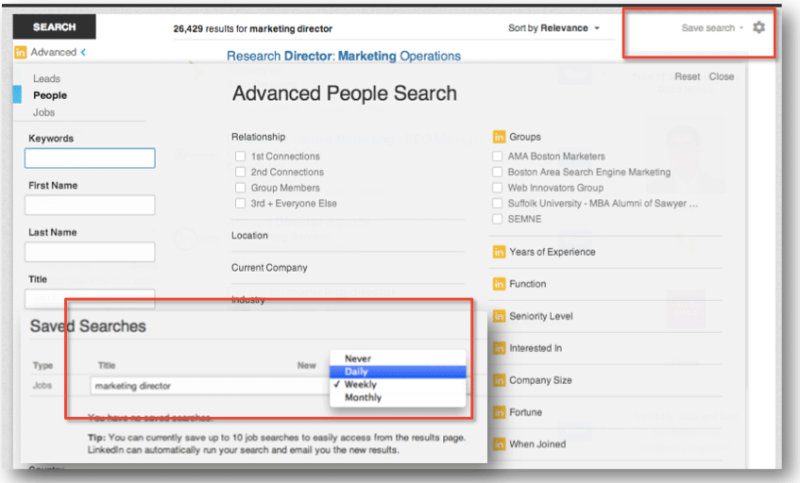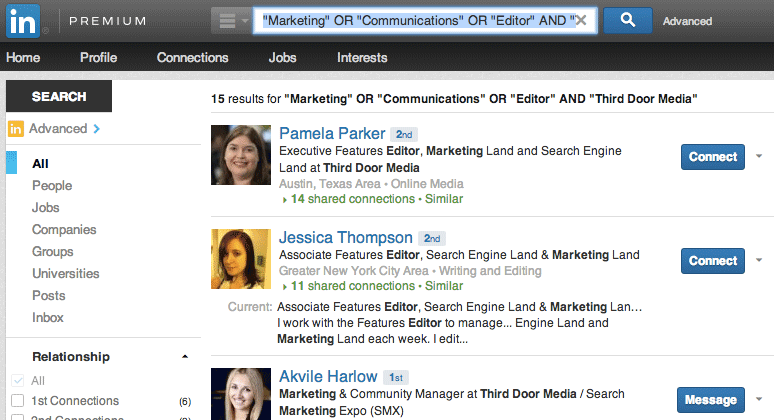
It’s no secret that LinkedIn is widely considered one of the top social media platforms for B2B marketers.
As illustrated in the fourth annual B2B Content Marketing: 2014 Benchmarks, Budgets, and Trends report, put out by the Content Marketing Institute and MarketingProfs, 91% of B2B content marketers are using LinkedIn to distribute their content. And in Holger Schulze’s 2013 B2B Content Marketing Trends Report, LinkedIn tops the list as the most effective social media platform for delivering content.
In recent years, I’ve invested much more time in LinkedIn. But I don’t use it just as a distribution channel; I use it for link building prospect research and business development as well. And I’m not the only one. Successful sales professionals have taken a similar approach for many years.
In research developed and compiled by Jill Konrath and Ardath Albee for their eBook, Cracking the LinkedIn Sales Code, they surveyed 3,094 sellers to find out how they were using LinkedIn to create new business opportunities.
“Top Sellers” — as defined by those that generated “lots” of opportunities via LinkedIn and were having a really good year in sales — use LinkedIn as both a list development tool and prospect research engine as well.
Here’s one chart demonstrating the difference in characteristics between top sellers and others that can absolutely be applied to how B2B SEO’s can obtain better performance in using LinkedIn for link prospecting development.
As Google continues to crack down on link building tactics used specifically for SEO gain, it becomes that much more critical to establish quality relationships with industry professionals and organizations that will help collaborate in content marketing initiatives.
In this column, I will explain how we use LinkedIn as a research tool for finding potential content marketing partners that will help us to generate links designed to benefit B2B SEO initiatives.
What About Google’s Recent Positions On Guest Blogging?
There has been a lot of chatter in the SEO community about guest blogging and link building. Google’s head of Webspam Matt Cutts put guest blogging center stage on his blog and in recent Webmaster Videos, and we’ve heard of site owners receiving warnings on their guest blogging efforts on several occasions.
My perspective is that we’re not reaching out to third party publishers just for links. We’re looking to build brand awareness for our (or a client’s) organization by creating and sharing content that is relevant to that particular publication’s audience. Do we take in the opportunity to acquire links as part of our research for outreach? Absolutely. But we’re not trying to be manipulative about it.
The other important point to consider is that everything about this tactic involves your personal brand. From the LinkedIn research to the outreach initiative to the content being produced, your own personal brand is at stake every step of the way.
Determining Your Link Prospecting Targets
The first step is determining the type of marketing and editorial contacts that you want to connect with. So if you’re unsure of the target audience, this means interviewing marketing communication team members, product marketing, and sometimes even the sales team, to get a sense of direction for your research.
Types of link prospects to consider:
Complementary vendors
Industry-specific organizations / associations
Customers
Distributors, dealers, or manufacturers (depending on your organization)
And of course, strategic partners
Be careful overstepping your bounds or creating conflict with existing relationships. Remember that this is not just an exercise in building links but in extending an organization’s brand presence and building content that should be valuable to appropriate audiences in the industry. That objective needs to be communicated to wary participants.
About LinkedIn Premium Accounts
The vast majority of LinkedIn users have free accounts. While this offering works pretty well for job seekers and professional branding, the premium account unlocks important features that are practically essential in developing targeted lists.
Most importantly:
Greater access to profile information
Advanced search capability
Premium / advanced search features
InMail capability
I highly recommend investing in at least the first level of premium account services if you’re going to use LinkedIn as a tool for link building research. Several of the functions discussed in this column assume you have premium account access in order to unlock certain information.
The LinkedIn Search Query
There are two ways search engine marketers can search LinkedIn for identifying link prospecting targets. The first is through LinkedIn’s advanced search interface, seen below.
Search engine marketers can use the filters present in this interface to create highly targeted lists of results. I also recommend using the “Save Search” function, highlighted above in red, to keep predefined filters in place and receive email alerts when LinkedIn finds new results.
The other way to search LinkedIn’s database is through more advanced search queries in their standard search field. LinkedIn provides the following types of commands for creating a more complex search result (a PDF of information can also be found here).
“” – when searching for an “Exact” phrase, name, or piece of information
() – for complex searches combining words or modifiers
AND – for combining words. “AND” is assumed if no modifier is used between words
OR – searches for one or more words in a profile, page, or other asset
NOT – exclude a particular term when searching
So, if you’re looking for the right contacts at specific organizations and companies, you might use a query like this to perform your research:
In this example, I am looking for members of the Third Door Media team (owners of this publication) that fit the roles of “Marketing,” “Communications,” or some form of editorial capacity (“Editor”). Once I have a short-list, I can cross-reference the results found in LinkedIn with the names of authors and editors listed in the target publication to determine the most likely candidates for outreach.
This is particularly advantageous if you have a select group of organizations and companies to research and are looking for specific members of the marketing department.
Considerations For Outreach
Once you have researched a sufficient target list, here are some recommendations for approaching the next step: outreach in an effort to contribute content.
First, I Don’t Necessarily Recommend Asking For A LinkedIn Connection Request. More marketers are getting frustrated with “blind” connection requests, and even though you have a “reason” to connect, I don’t think it’s wise to lead with a favor request like link building.
Do Your Homework In LinkedIn. Pay attention the individual’s interests, group participation, experience, etc. Look for related connections and expertise that can help drive conversation.
Do Your Homework On The Target Publication. What does this individual write about? Pay attention to some of their best work or most important contributions. Make certain you have a solid angle as to why your organization’s content marketing efforts will benefit the target publication’s audiences.
State Your Case As Concisely As Possible. If you’re using LinkedIn’s InMail function, you don’t have that much room for verbosity, and an unknown connection wants to know your point quickly. Explain the opportunity and why it helps them and their audiences as quickly and concisely as possible, without coming off as too abrupt of course.
Offer To Help. Some of my most successful link building connections began because I offered free analysis or provided assistance on a recognized problem or issue in their online marketing strategy (be warned that unsolicited help done with a critical tone is almost certainly going to get ignored however).
By : Derek Edmond


